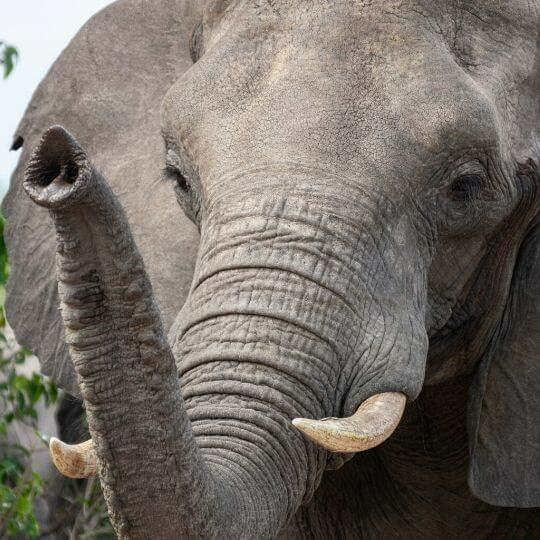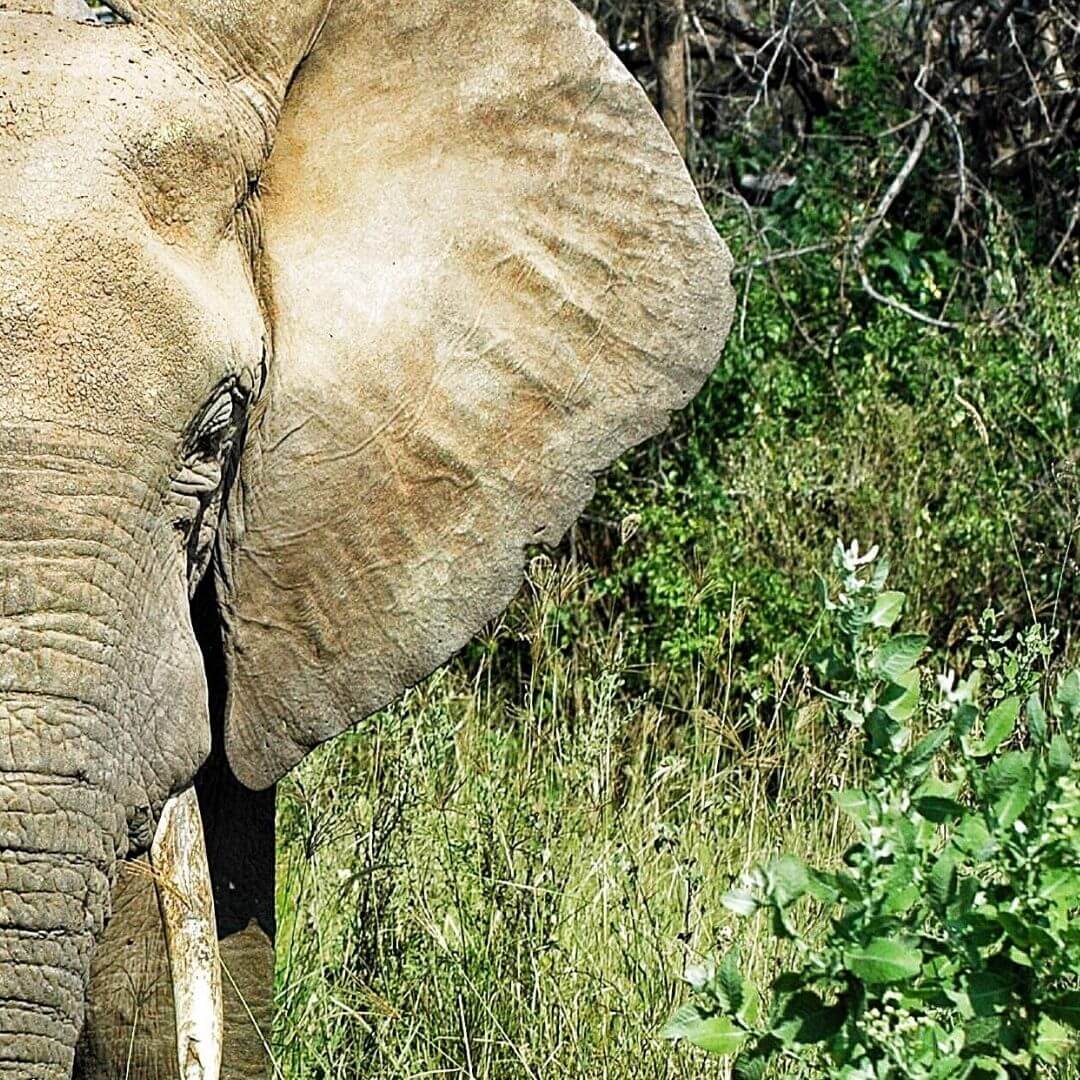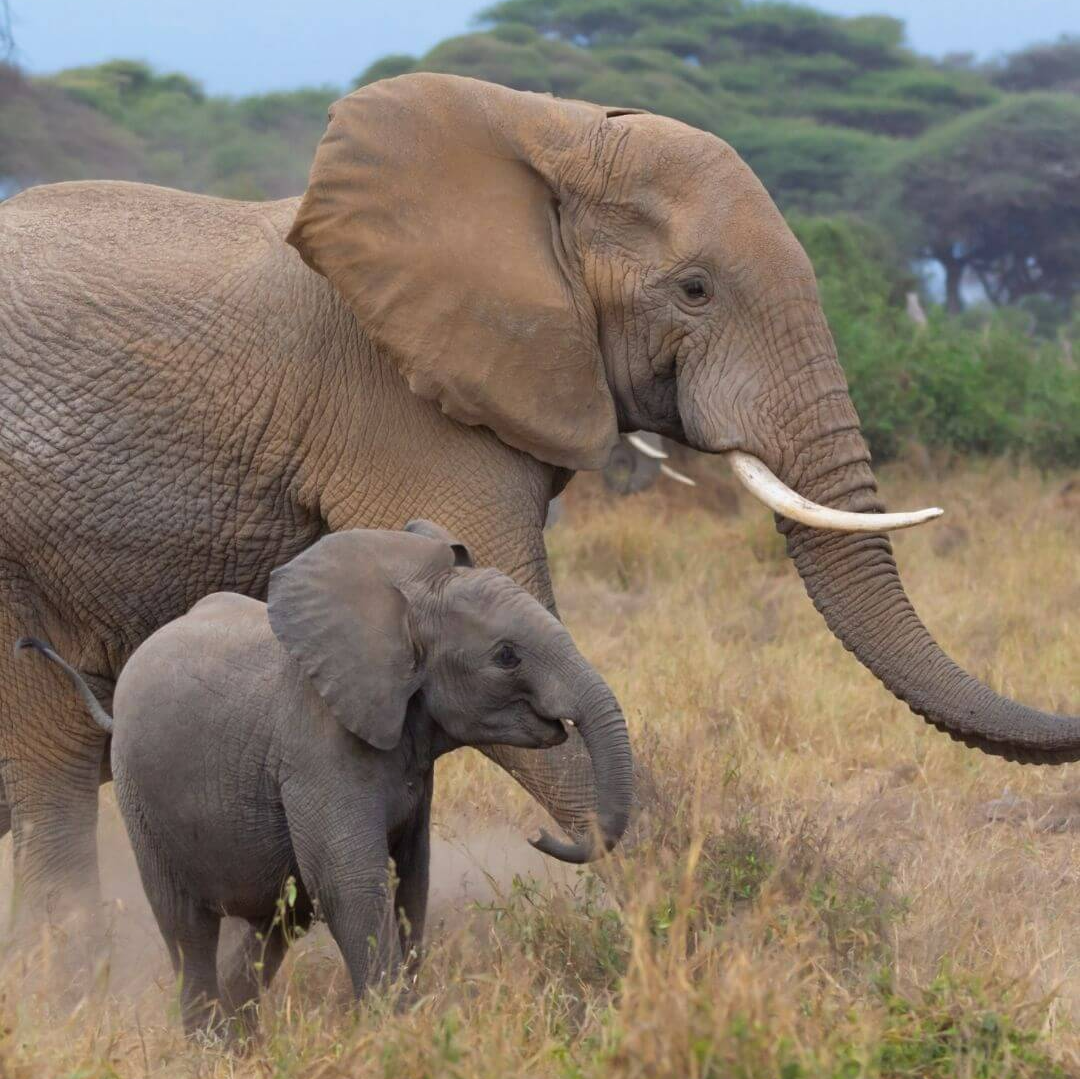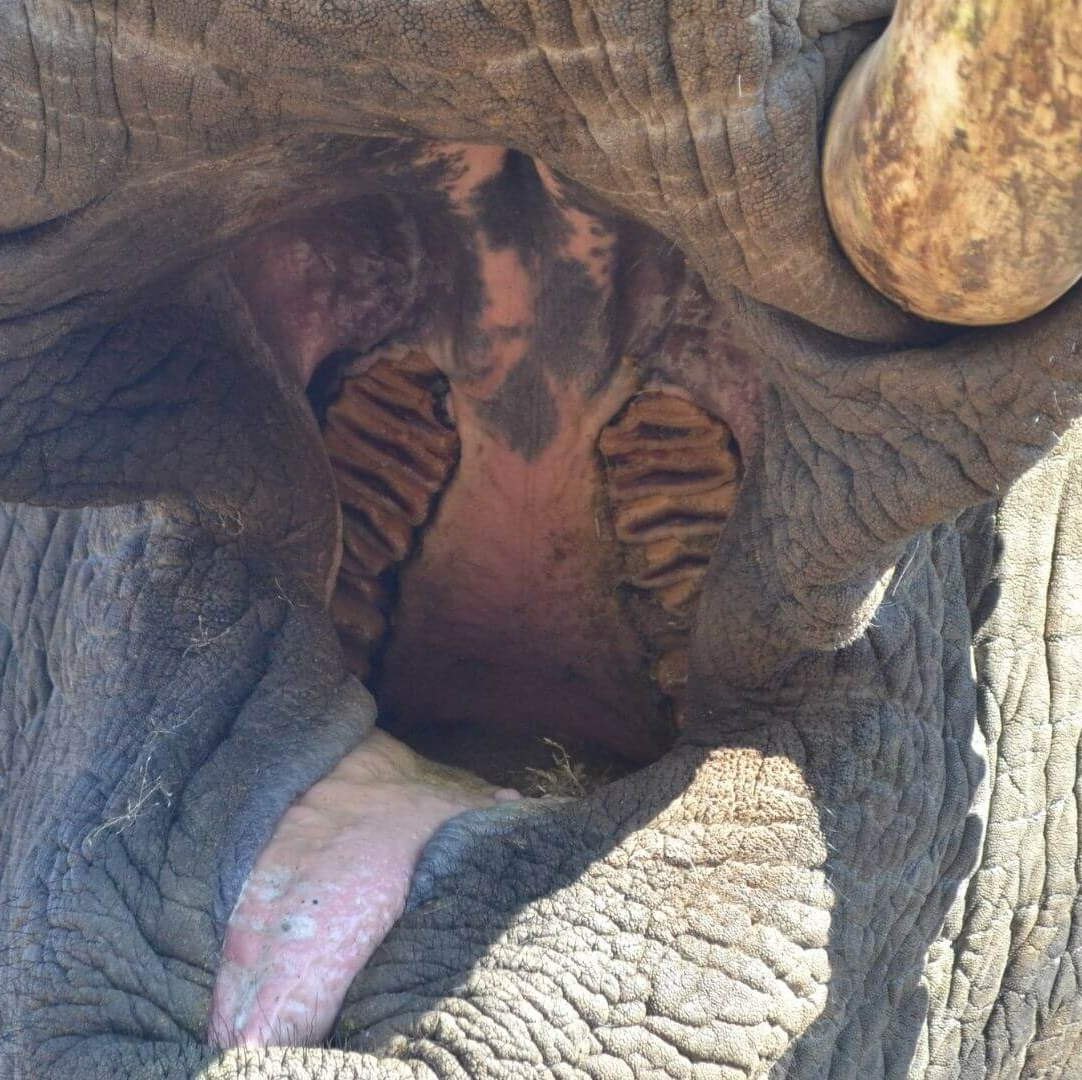African Bush Elephant
Loxodonta africana
Fun Facts About the African Bush Elephant
African bush elephants have more muscles in their trunks than humans do in their entire bodies!
Unlike Asian elephants, both male and female African bush elephants have tusks.
African bush elephants can live more than 60 years when they have plenty of food and a healthy ecosystem!
Where Do African Bush Elephants Live?
They can be found scattered throughout the savannas of sub-saharan Africa.
African bush elephants live in many types of habitats, like the open savanna to the desert.
Their populations are spread over many African countries!
Diet
What Do African Bush Elephants Eat?
All elephants are herbivores!
Their diet primarily is leaves, grasses, and fruit. They will use their tusks to peel bark from trees or dig up roots, which are also a large part of their diet.
An adult elephant can eat up to 300-pounds of food in a single day!
What Do African Bush Elephants Look Like?

Trunk
An elephant's trunk is their nose! Their trunks are filled with strong muscles that help them reach for food, slurp up water, and make their iconic trumpeting sound.

Ears
Elephants often use their ears for communication. They will stretch their ears wide to tell predators to back off. They will also flap them around to help cool their bodies down; we call this "ear-conditioning!"

Size
Male elephants are much larger than females. Males weigh up to 14,000-lbs (7 tons) while the females can weigh up to 8,000-lbs (4 tons). A large male can stand 13-feet tall!

Teeth
Elephants have four large teeth in their mouth. They are flat and allow elephants to grind up plant matter. Elephants will go through 6 sets of teeth in their lifetime!
What Does an African Bush Elephant Do All Day?
EAT
Elephants spend almost the whole day eating! They are constantly searching for fresh food.
MIGRATE
Elephants travel great distances looking for fresh food. They will travel thousands of miles during a year following the rains.
SLEEP
Elephants sleep for roughly 4-hours per day. They normally sleep in the early morning hours with an occasional mid-day nap.
COOLING DOWN
Elephants use their trunks to cover themselves with mud or water to help them stay cool. They also use ear-conditioning!
African Bush Elephant Family Life
Elephants often live in herds with adult females and their offspring. There herds can be quite large, sometimes with up to 70 members! The “alpha” elephant in the herd is the biggest and often the wisest elephant.
Male elephants only stay with the herds until they are old enough to go out on their own. Once the males are old enough, they either live by themselves or with a few other males.
Elephant Communication
Elephants communicate with others by making vocal noises. They can make rumbles, trumpets, snots, roars, barks, and grunts. When an elephant makes a roar, trumpet, or growl that could show signs of aggression.
African bush elephants can hear these calls from over 1.2 miles away!
They also communicate they use their ears and trunks to signal to other members in their herd.
Why Are African Bush Elephants Important?
Elephants Are In Danger!
Humans are the biggest threat to the African bush elephants. Elephants are illegally hunted (poached) for their tusks, which are made out of a material called ivory. This ivory is then used to make jewelry and other trinkets and are illegally sold and purchased.
Elephants are also
losing their habitat. As the human population gets bigger, many animals are losing their homes to villages, farms, and roads. Because elephants are running out of space, negative interactions between people and elephants have become more common.
How YOU Can Help African Bush Elephants!
Avoid Ivory
Avoid purchasing any products that contain ivory, regardless of when or where it was harvested.
Shop Responsibly
Make sure to buy wood/paper products that are certified by FSC or bamboo alternatives! Look for Fair Trade Certified coffee to protect elephant habitats.
Visit Accredited Zoos
If you are going to see elephants in real life, use this checklist to ensure the zoo has high standards of animal care and contributes to conservation.
Financial Donations
Donate to the Elephants and Bees project or Disney's Conservation Fund to support beehive fences.
Sign Up for our Newsletter
Stay up to date with new adventures, classes, deals, and more!
MENU
EDUCATIONAL RESOURCES
All Rights Reserved | Edzoocating.com

